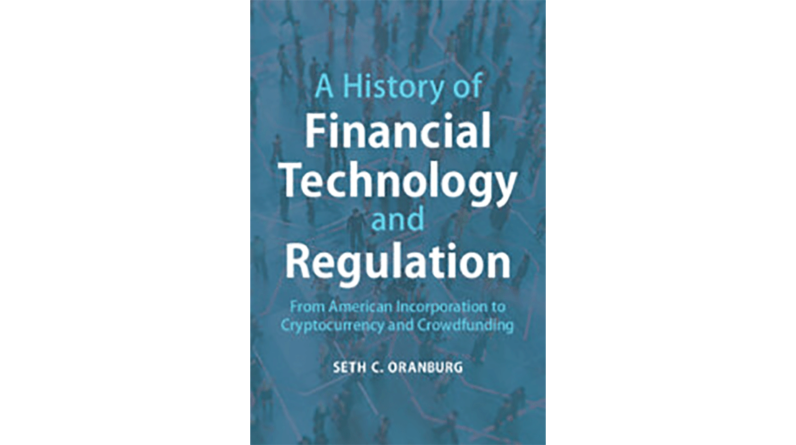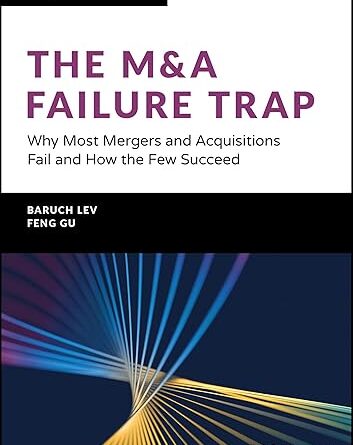
A History of Financial Technology and Regulation: From American Incorporation to Cryptocurrency and Crowdfunding. 2022. Seth C. Oranburg. Cambridge University Press.
In A History of Financial Technology and Regulation: From American Incorporation to Cryptocurrency and Crowdfunding, Seth C. Oranburg highlights recent changes to the world of finance by exploring the role of technology within it, including complex phenomena such as mutual funds, cryptocurrencies, and the stock market. The chapters begin with historical analogy and basic principles before describing complex digital-investment strategies and instruments. Readers will gain an understanding of key concepts in financial regulation, including how law and regulations prevented some financial crises while facilitating others. The author concludes with ideas about where finance is trending and how the law should respond. The book should appeal to both specialists and generalists who are interested in learning more about regulation, finance and economics, business, and law.
Oranburg, a legal scholar and professor at the University of New Hampshire Franklin Pierce School of Law, provides a broad overview of policy initiatives and financial markets to address the problems inherent in markets as a result of regulation. In all of the book’s chapters, the author develops his view of how financial markets have developed and how investors and regulators have shaped these developments. A constant theme throughout the book is the division of US corporate finance history into three distinct eras.
The First Era began with the ratification of the Constitution in the 1790s and ended with the Great Depression in the 1930s. The Second Era began with the Securities Act of 1933 and ended with the Great Recession of 2007–2009. Finally, the Third Era began with the emergence of bitcoin in 2008 and continues to this day. The author’s fundamental perspective is that throughout history, technical developments furthering financial opportunities have been channeled by “major players” — that is, wealthy investors and regulators — to benefit the few over the many. He describes recent developments such as the push toward investments in cryptocurrency as the consequence of smaller investors desperately searching for higher returns. This idea, however, ignores the wide range of investments already available to the public and does not elaborate on investors’ excessive risk taking in financial markets.
The book describes the limited regulation of “bucket shops” in the latter half of the nineteenth century, where smaller investors driven by the innovation of ticker news gambled in the stock market. A bucket shop is a physical location, typically in an office building, designed to look like a high-end brokerage firm. These institutions, often run by fraudulent owners, put pressure on brokers’ fees and participation restrictions, contributing to a vast increase in stock ownership in the 1920s.
This widening participation in stock speculation helped fuel the financial excesses of the 1920s. With the crash and harsh economic downturn that followed in the 1930s, regulation turned toward limiting the sources of such excesses and instability. The New Deal era regulations are presented as initiatives to disenfranchise investors, particularly small investors. This dynamic then set the stage for recent decades, in which markets are dominated by privileged investors, such as angels and startups.
In summary, the author urges us to not always seek to create a new federal agency in response to whatever the next crisis will be but rather to think about alternatives that can protect investors without driving them away. In our current Third Era, where smaller investors can easily choose to invest in unregulatable assets, too much regulation can be dangerous — just as too little regulation can be. We should think creatively about alternative ways to design optimal regulations so that the future of financial technology leads to a safer economy with more balanced financial opportunities for all.
If you liked this post, don’t forget to subscribe to the Enterprising Investor.
All posts are the opinion of the author. As such, they should not be construed as investment advice, nor do the opinions expressed necessarily reflect the views of CFA Institute or the author’s employer.
Professional Learning for CFA Institute Members
CFA Institute members are empowered to self-determine and self-report professional learning (PL) credits earned, including content on Enterprising Investor. Members can record credits easily using their online PL tracker.








